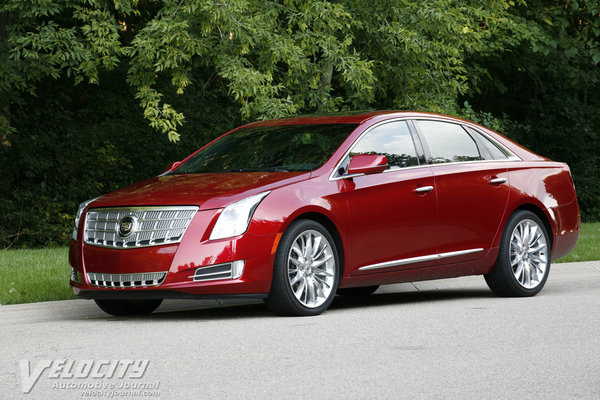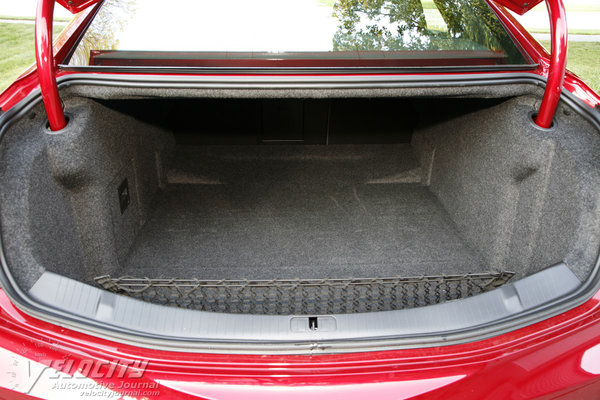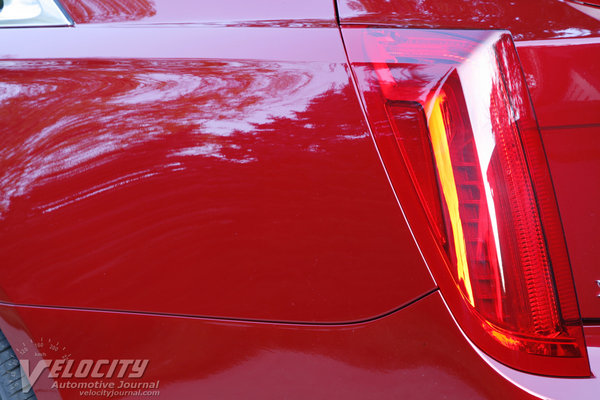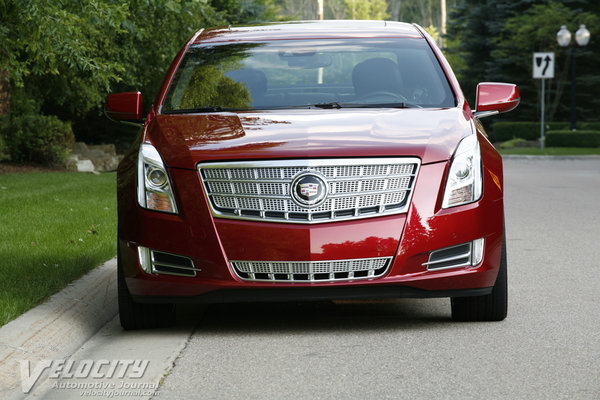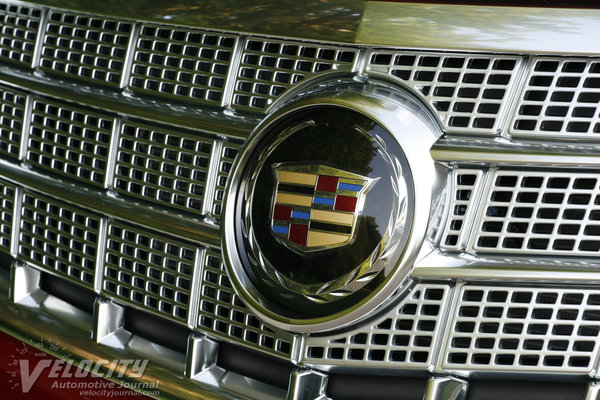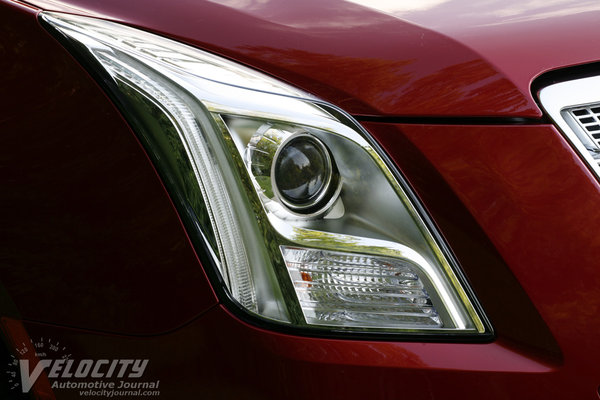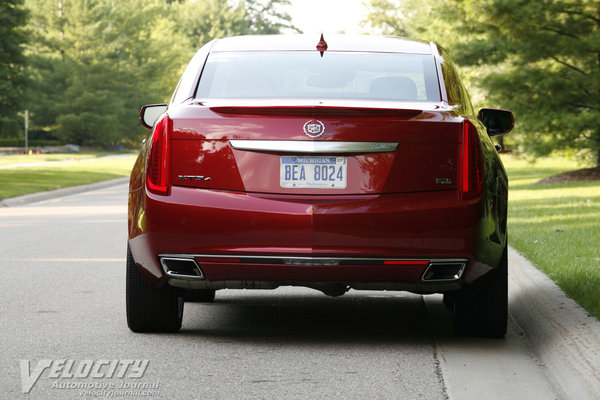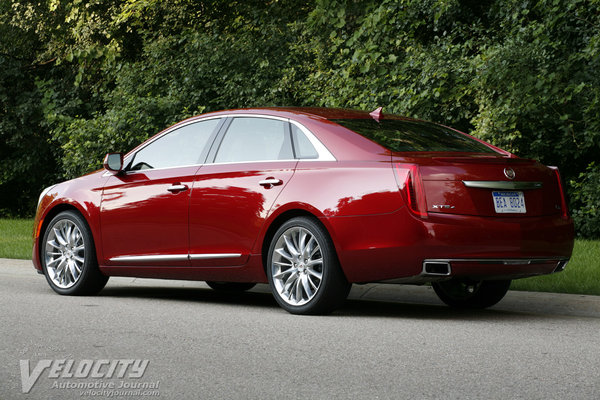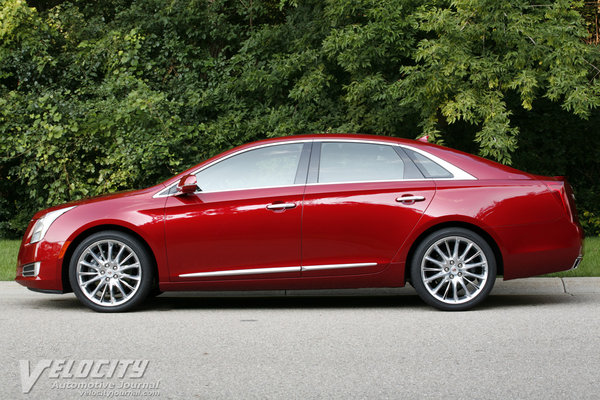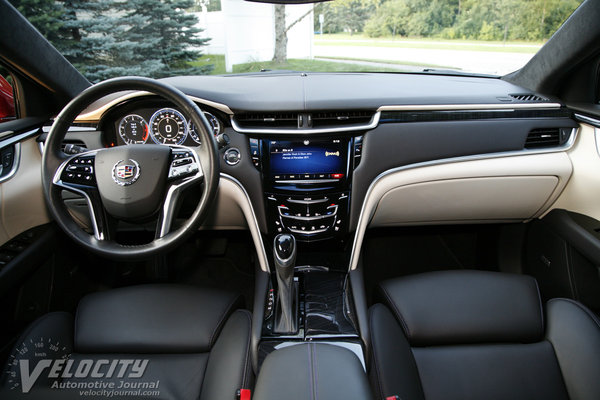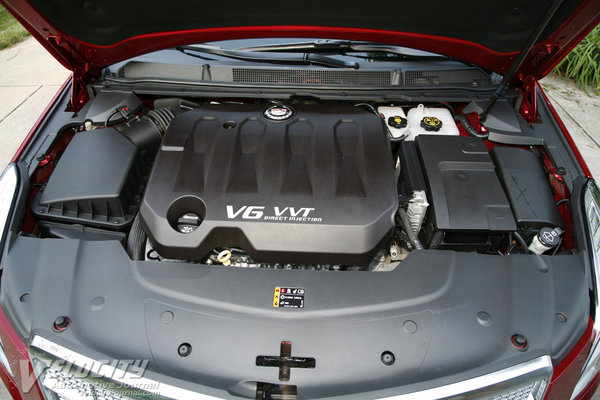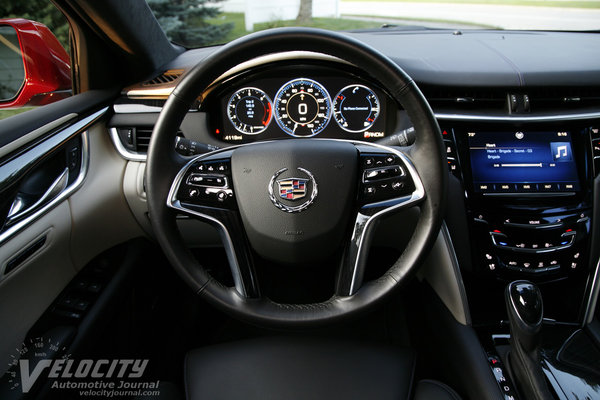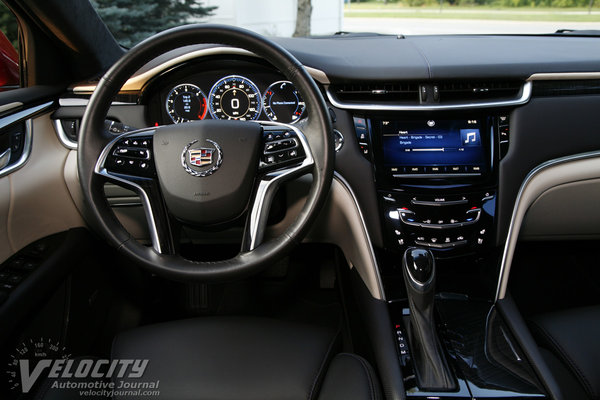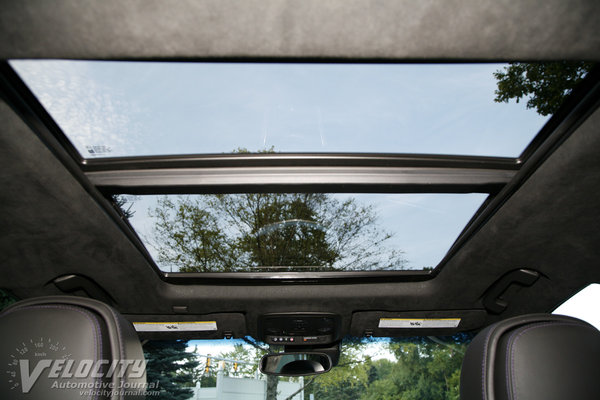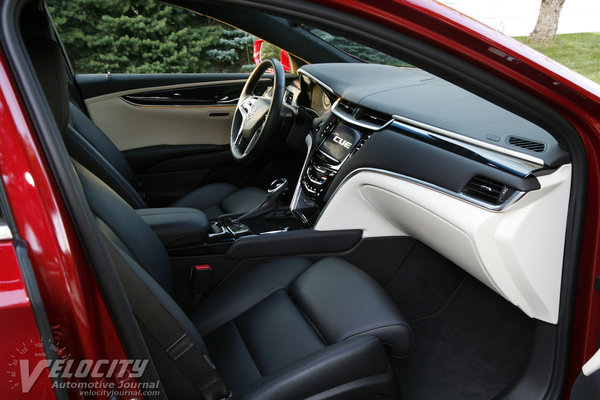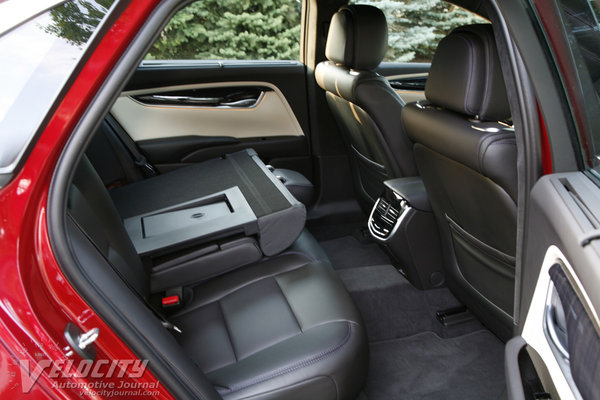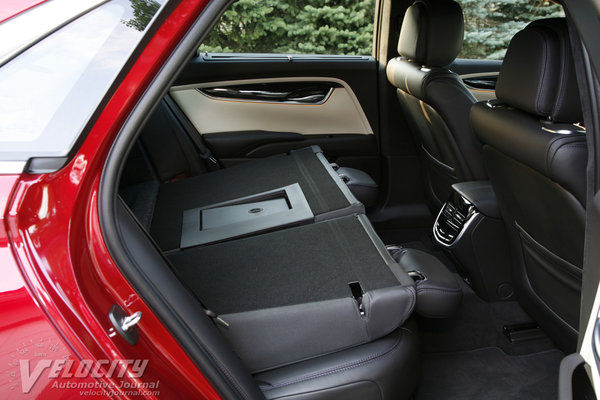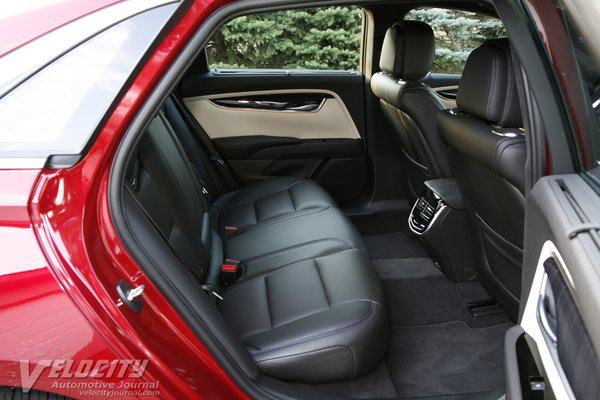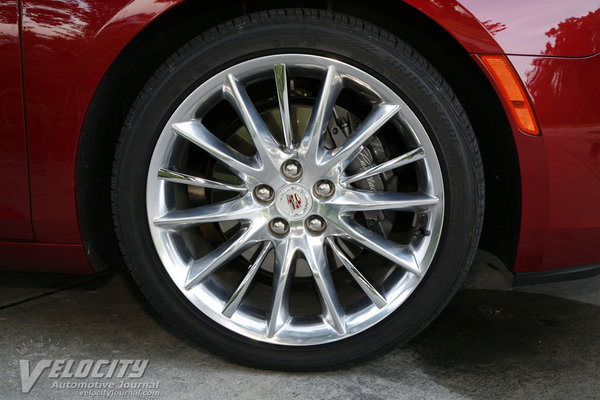2013 Cadillac XTS4 Platinum
10/21/2013
Shahed Hussain
Cadillac's new XTS replaces both the previous DTS and STS sedans. The spacious DTS was popular with Cadillac's traditional clientele, while the smaller STS aimed at the German and Japanese luxury brands. The XTS is intended to keep STS and DTS owners within the family, plus bring some non-GM customers to Cadillac dealers. Built on the Epsilon II platform, the XTS shares much in common with the Buick Lacrosse and Chevrolet Impala.
Comparing XTS pricing with the new CTS reveals considerable overlap between the two sedans, which might cause some confusion in dealer showroom. 2013 XTS pricing starts from $44,075 for the base front-drive model and tops out at $61,305 for the all-wheel drive XTS Platinum. German alternatives include the Audi A6, Mercedes-Benz E-Class, and BMW 5-Series. The Lexus GS and Infiniti M sedans are also in the same price range as the XTS. We tested a loaded 2013 XTS Platinum equipped the Driver Assist Package ($2,395) and crystal red tintcoat paint ($995). The total MSRP added up to $64,695 including the $920 destination charge. Notable standard features include 20-inch alloy wheels, magnetic ride control dampers, 14-speaker Bose audio system, heated and ventilated front seats, heated outboard rear seats, heated steering wheel, configurable instrument display, rearview camera, navigation system, and adaptive front headlights.
The XTS is the first Cadillac with a configurable instrument display and virtual gauges. Instead of an analog speedometer and tachometer, the instrument panel replicates dials and digits to simulate real gauges. Various display modes allow the driver to customize the vehicle data shown. The leather-wrapped steering wheel has integrated controls for Bluetooth phone, audio, and cruise control. Polished wood and matte aluminum line the dashboard, door panels along with additional wood on the steering wheel and shift knob. Cadillac's CUE touch interface operates similarly to a smartphone or tablet. The touchscreen vibrates to confirm taps to adjust climate control and navigation settings. Swiping the silver touch sensor bars below the navigation display adjusts audio volume, fan speed and temperature. We found that the CUE interface required repeated swipes to change settings, and lacked the tactile feedback of discrete buttons or rotary knobs.
Choosing the XTS Platinum adds generously bolstered full leather seats with extendable front seat cushions for extra thigh support. Both driver and front passenger have power seat controls and adjustable lumbar support. The snug seats and wide center console lend a cockpit-like feel to the XTS. Next to the shifter are dual cupholders concealed beneath a hinged lid. Aluminum trim on the dash and front doors glows with ambiance lighting at night. The dual-panel Ultraview sunroof extends over the rear seats. Rear passengers benefit from ample legroom and supportive seats for the outboard positions, but the center occupant will find an uncomfortably hard seatback. The rear compartment gets dual air vents and separate temperature settings. Folding down the armrest reveals dual cupholders. A trunk pass-through allows skis to fit inside, or both rear seats can be folded for additional cargo space. A power rear sunshade and side window screens shield passengers from the sun.
An all-aluminum 3.6L V-6 is the standard powerplant on all XTS models except for the new 2014 VSport, which gets a 410-bhp twin-turbo version of the V-6. The normally aspirated six is rated at 305-bhp @ 6,800 RPM and 264 lb.-ft. @ 5,200 RPM. Double overhead cams, variable valve timing, and direct fuel injection are standard technology for this V-6. Coupled to the Hydra-Matic 6T70 six-speed automatic and all-wheel drive, the XTS achieves 17/26 MPG (city/hwy.). Opting for front-drive gains another two MPG on the highway. Our overall average was 20 MPG, but we saw up to 23 miles per gallon on the highway.
Cadillac fits the XTS with magnetic ride control dampers and rear air springs to smooth out bumps and maintain level ride height. Other suspension details include modified MacPherson struts (HiPer Strut) and tubular stabilizer bar in front, accompanied by rear "H" arm links and the previously noted air springs. Steering is via a hydraulic power-assisted rack-and-pinion system. Brakes are discs at all four corners, with vented Brembo front rotors. ABS and Stabilitrak stability control are standard. Other XTS models are equipped with 19-inch alloy wheels, but the XTS Platinum gets larger diameter 20-inch alloy wheels and Bridgestone Potenza P245/40R20 all-season tires. The AWD XTS weighs in at a substantial 4,215 lbs., but even the front-drive XTS is just over two tons.
The XTS makes no pretense to be a sport sedan, yet Cadillac engineers tuned the suspension for a firm, controlled ride that may surprise previous customers. The low profile Bridgestone ties respond quickly to steering inputs, but the rigid sidewalls find every bump and divot in the road. On smooth surface, the XTS tracks straight and true; magnetic ride control dampers eliminate undesired body motions. Cadillac's optional all-wheel drive system and the HiPer Strut front suspension minimize torque steer during full throttle acceleration. Coupled to the smooth-shifting 6-speed, the V-6 remains well-mannered throughout the rev range. Midrange throttle response from the V-6 is decent, but low-RPM acceleration is merely adequate. A hefty curb weight and tall 2.77:1 axle ratio contribute to the Cadillac's unremarkable low speed acceleration. For optimum fuel economy, the 6T70 automatic upshifts to sixth gear as quickly as possible, so we used the steering wheel paddles to manually shift for faster acceleration.
The XTS inherits the difficult task of keeping former STS and DTS owners within the Cadillac family. Considering that the previous models appealed to different customers, the XTS offers a reasonable compromise for these Cadillac owners. Within the model lineup, the XTS Platinum sits at the top; but at over $60K, the XTS runs into some serious competition from German sedans which offer more exclusivity at comparable prices. A more sensible alternative is the XTS Luxury AWD, which starts at less than $52K, or the even more affordable XTS Standard at around $45K. Although the less expensive models give up some luxury and technology options, these are the best values in the XTS lineup.

